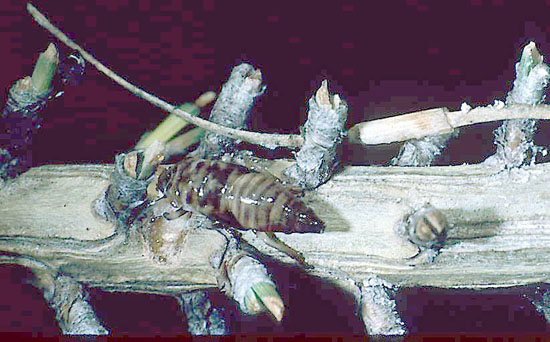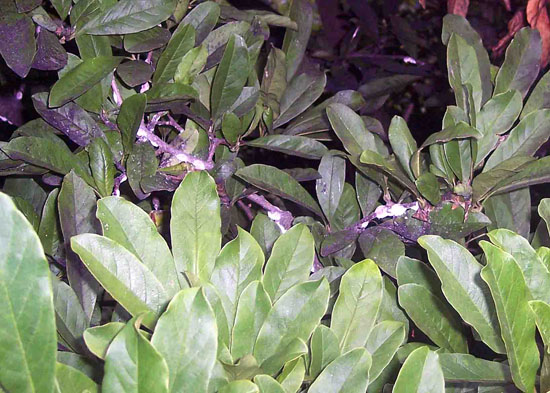Issue 10, June 25, 2010
Scouting Watch
Japanese beetle continues to be numerous in most areas of the state. Reports of high numbers have been submitted from the Collinsville, Champaign, Lincoln, Peoria, Rockford, and other areas. Remember that protecting plants early to prevent leaf damage provides more control than just later treatments as the beetles are attracted throughout the balance of the summer to damaged foliage.
Pine spittlebug has been reported in the Peoria area. This insect is usually found primarily in northeastern Illinois. In scouting, trees look like someone has spit on the small branches. Under the spittle, there will be the oval spittlebug nymph that produced the spittle mass. Various species of pines are attacked, and there is a small amount of dieback under the bark where the spittlebug has fed. Scattered spittle masses do not represent a problem, but several bugs per foot of twig can result in dieback. Most contact insecticides will provide control, but the spittle must be washed off of the twigs to get the insecticide to the nymphs. Washing off the spittle with water may be necessary before treatment. If the water is applied forcefully enough to knock off the spittlebug nymphs, an insecticide spray should not be needed.

Pine spittlebug nymph
Magnolia scale is becoming noticeable in the northern half of the state. Little can be done until fall when the crawlers are out and susceptible to contact insecticide sprays. Systemic insecticides, such as imidacloprid (Merit, Xytect, Imicide, Pointer, others) or dinotefuran (Safari) may be effective. If you try a systemic, let me know how it works.

Magnolia scale
--Phil Nixon
Author:
Phil Nixon